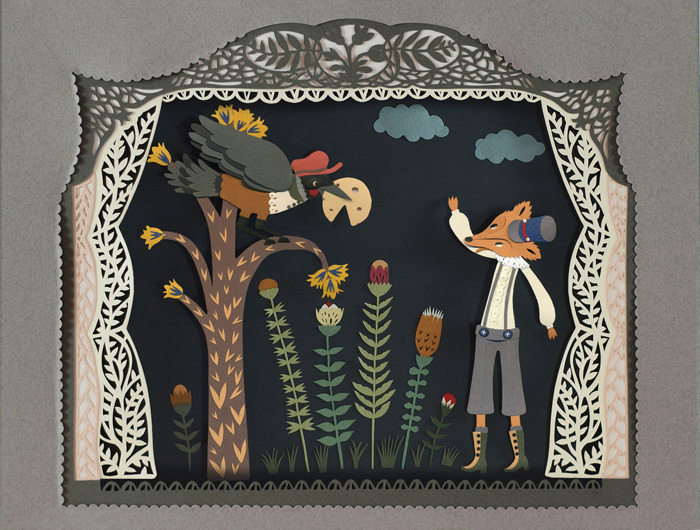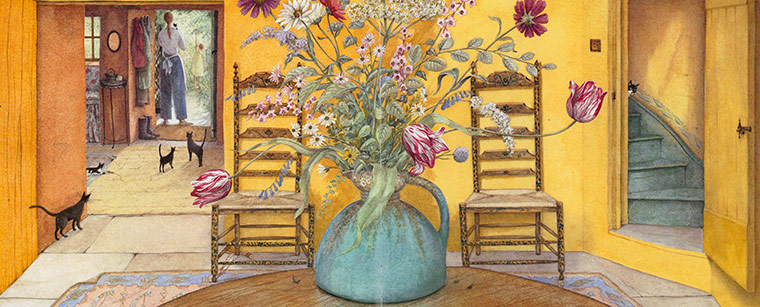 Artist and blogger Elsa Mora is chronicling her creative process as she works on a series of eight cut paper illustrations for a French edition of the Fables of La Fontaine (the final book will be a pop-up with paper engineering by Julia Frolich). The project's timeline is 6-8 weeks, which seems impossibly short given the intricate nature of her work (sometimes it seems to take me 6-8 weeks to write a single post), but the first illustration, for The Fox and the Crow, is already on its way to France: that's a detail of its frame, a theater curtain, above.
Artist and blogger Elsa Mora is chronicling her creative process as she works on a series of eight cut paper illustrations for a French edition of the Fables of La Fontaine (the final book will be a pop-up with paper engineering by Julia Frolich). The project's timeline is 6-8 weeks, which seems impossibly short given the intricate nature of her work (sometimes it seems to take me 6-8 weeks to write a single post), but the first illustration, for The Fox and the Crow, is already on its way to France: that's a detail of its frame, a theater curtain, above.
Elsa's posts on the book in progress are fascinating reading if you're at all interested in how books are made, no matter if you're an artist, a writer, or a reader. They cover everything from materials and techniques to making artistic decisions such as whether the animal characters should be clothed or not. So much thought goes into every decision. In this case, she ultimately decided to dress the animals in her illustrations: they're more fun to make as well as to look at that way. I agree!
For a book illustrated as if each story or scene is happening on stage, it's also fun to get a literally behind-the-scenes look. I love the way Elsa created a wife for Fox, even though she doesn't appear in the finished illustration below.

Next up: The Town Mouse and the Country Mouse. Wait til you see the Town Mouse's outfit!
 [If you're unfamiliar with the fables of La Fontaine, check out The Hare and The Tortoise and Other Fables of La Fontaine, illustrated by another of my favorite artists, Giselle Potter (verse translation by Ranjit Bolt; Barefoot Books, 2006. I can't remember, but judging from the cover it looks as if the animals in this one appear in their natural state). I've posted my favorite editions of Aesop here as well.
[If you're unfamiliar with the fables of La Fontaine, check out The Hare and The Tortoise and Other Fables of La Fontaine, illustrated by another of my favorite artists, Giselle Potter (verse translation by Ranjit Bolt; Barefoot Books, 2006. I can't remember, but judging from the cover it looks as if the animals in this one appear in their natural state). I've posted my favorite editions of Aesop here as well.
And finally, do you like your picture book animals dressed or do you think Animals Should Definitely Not Wear Clothing?]



